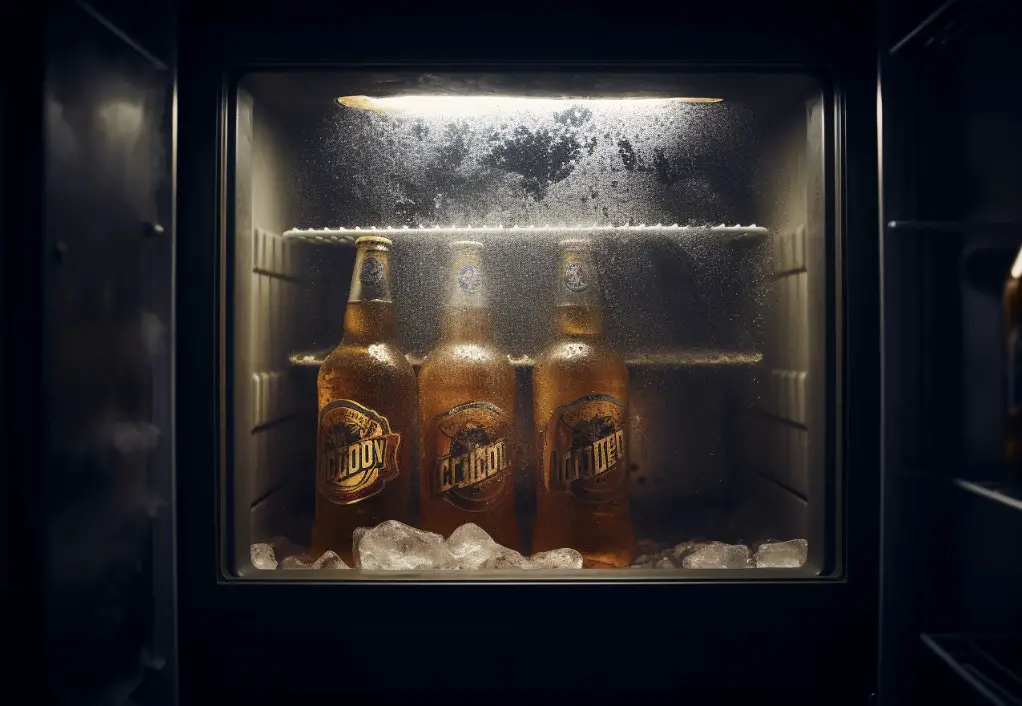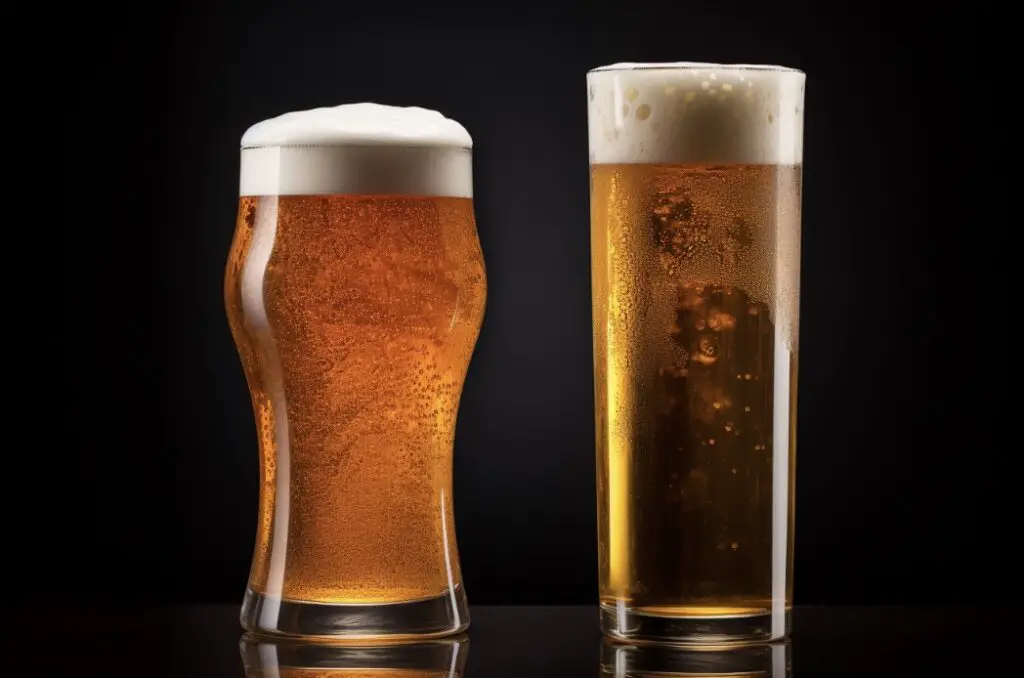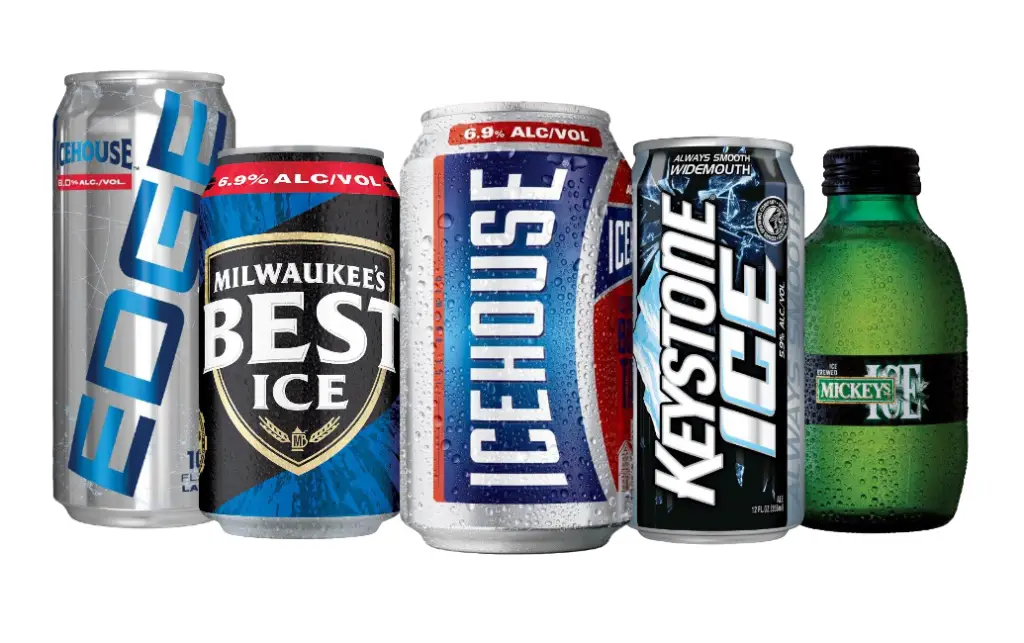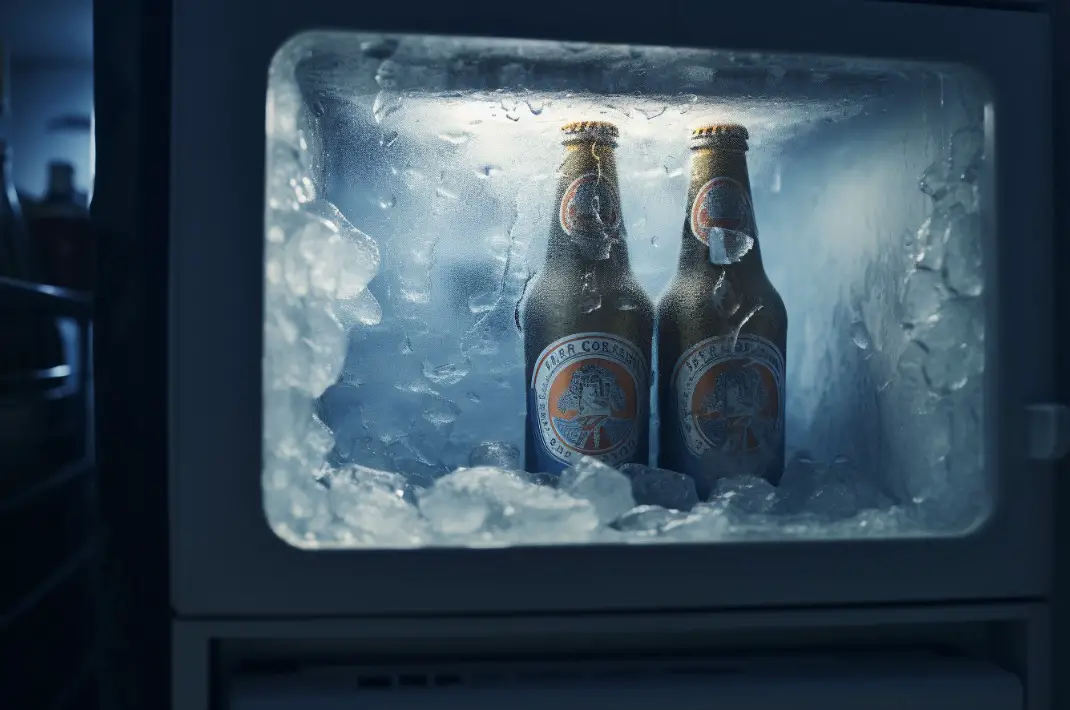As a professional brewer, I’ve always been intrigued by the myriad of beer styles that exist.
Among these, ice beer has always held a special place in my heart. Not just because of its unique production method, but also due to its rich history and distinct taste profile.
Ice beer is essentially a brew that’s partially frozen post-fermentation to remove water content, resulting in a stronger and often smoother beer.
It’s not unlike “ice cider” or Applejack as it is known here in the US, that you will know a lot about if you are an avid reader of this site!
What is Ice Beer?
Ice beer is a type of beer that has been chilled post-fermentation to below freezing temperatures.
This process causes ice crystals to form which are then removed, resulting in a concentrated beer with higher alcohol content. This unique brewing method results in bold, rich flavors that are a treat for the senses.

History and Cultural Origin
The roots of ice beer can be traced back to medieval Europe, specifically in colder regions where beers would naturally freeze during transportation or storage.
Brewers soon realized that this accidental freezing concentrated flavors and increased alcohol content. Over time, this accidental discovery morphed into a deliberate brewing technique.
The Germans were among the first to refine this technique, which they termed “Eisbock” (meaning “Ice Strong Beer” in German). It was a cherished drink during winters and became an integral part of their brewing tradition.
Modern Examples and Brands
Fast forward to the modern era, and ice beer has found its way into mainstream brewing. Some well-known brands include Labatt Ice, Molson Ice, and Bud Ice. These beers might not have the depth of traditional Eisbocks but are still popular among those looking for a more potent punch than standard lagers.
Taste and Differences to Normal Beer
So, how does ice beer compare to its non-frozen counterparts? The process of freezing and removing water concentrates not just the alcohol but also the flavors. You’ll find ice beers to be richer, bolder, and often sweeter.

The higher alcohol content provides a warming sensation, making it a popular choice during colder months. However, it’s worth noting that the method can sometimes lead to a slightly smoother mouthfeel, which can mask some of the alcohol potency.
During my brewing explorations, I’ve had the pleasure of tasting several ice beers. The sensation is quite distinct – there’s the immediate boldness of malt, often followed by hints of caramel or toffee. The finish is warm, almost akin to sipping a fine spirit.
What are some examples of ice beers available to buy?
Ice beers have been produced by a number of American breweries over the years.

Here are some examples:
- Labatt Ice: Brewed by Labatt Brewing Company in Canada, this was one of the first significant ice beers available on a large scale in North America.
- Bud Ice: An ice beer from Anheuser-Busch, it became quite popular in the U.S. during the 1990s and is still available in many markets.
- Molson Ice: Another Canadian entry, this one from Molson Coors Brewing Company. It’s a pale lager that underwent the ice brewing process.
- Natural Ice: Also known as “Natty Ice,” this beer is from Anheuser-Busch and has gained popularity, especially among college students due to its low cost and higher alcohol content.
- Busch Ice: Another entry from Anheuser-Busch, this beer is part of the Busch beer family and offers a smooth taste with increased alcohol content.
- Keystone Ice: Brewed by Coors Brewing Company, it’s an affordable ice beer option with a slightly higher alcohol content than its regular counterpart.
- Milwaukee’s Best Ice: From Miller Brewing Company, this is an extension of the Milwaukee’s Best brand. Like other ice beers, it boasts a higher alcohol content.
- Mickey’s Ice: Produced by MillerCoors, it’s an ice-brewed variation of the regular Mickey’s malt liquor.
Remember that while these are commercial examples of ice beers, they might not fully represent the depth and flavor profile of traditional Eisbocks from Germany.
Those looking for a more authentic ice beer experience might want to explore craft breweries or specialty beer shops for artisanal versions or imported German Eisbocks.
Recipe for Traditional Ice Beer
Ingredients:
- 10 lbs Pale Malt
- 2 lbs Munich Malt
- 0.5 lbs Caramel Malt
- 1 oz Noble hops (for bittering)
- Lager yeast
- Water
Instructions:
- Mash the grains at 155°F for 60 minutes.
- Boil for 90 minutes, adding the hops at the start of the boil.
- Cool the wort quickly and transfer to a fermenter.
- Pitch the lager yeast and ferment at 50°F until complete.
- Once fermentation is complete, transfer the beer to a container and place it in a freezer set to just below freezing.
- After several hours, remove the formed ice crystals. This concentrates the beer.
- Bottle or keg the concentrated beer and carbonate as desired.
Is it Illegal to Make Ice Beer?
Navigating the legalities of brewing can be a complex maze. With ice beer, the rules can sometimes be just as frosty.
Given the unique process of making ice beer, which concentrates the alcohol, one might wonder if there are any legal barriers in place. The answer is, it depends on the region and the intended purpose of production.
Home Brewing Laws
In many countries, home brewing is permitted for personal consumption, and this generally includes brewing stronger beers such as ice beer.
However, it’s crucial to check the specific alcohol limits allowed for homebrewed beverages in your jurisdiction.
Some places may have a ceiling on the alcohol content you can achieve, even for personal use. Going beyond this limit might technically turn your brew into a distilled spirit, which is subject to stricter regulations.
Commercial Production
For commercial brewers, the game changes significantly. Producing and selling ice beer requires specific licenses, especially if the resulting brew surpasses certain alcohol percentages.
In the U.S., for example, any beer above 14% ABV can be classified differently, potentially as a malt liquor, and is subject to different taxes and regulations.
Moreover, labeling and advertising rules can be strict. In Canada, for instance, ice beer can be marketed only if the beer was genuinely frozen during production. This ensures that consumers get an authentic product.
Distillation and Freeze Concentration
While the process of making ice beer might seem like a form of distillation, it’s actually more of a freeze concentration.
However, the legal distinction can be fuzzy in some areas. In some jurisdictions, any form of alcohol concentration, even freeze concentration, might be considered akin to distillation, requiring a special permit or being outright illegal for personal use.
Conclusion
Ice beer is a captivating blend of history, science, and art. From its accidental beginnings to its modern interpretations, it’s a style that offers a unique taste and experience.
While ice beer brewing offers a unique and delightful product, it’s vital to stay on the right side of the law.
Whether you’re a homebrewer or looking to venture commercially, always consult local regulations and perhaps even seek legal counsel if you’re unsure. Remember, brewing is as much an art as it is a science, but even artists need to follow the rules!
10 Fast Facts About Ice Beer:
- Originated in medieval Europe.
- Refined by Germans with the term “Eisbock”.
- Concentrated by removing ice crystals post-fermentation.
- Typically has a higher alcohol content than standard beer.
- Popular modern brands include Labatt Ice and Bud Ice.
- Offers a richer, bolder, and sweeter flavor profile.
- The alcohol provides a warming sensation.
- It has a smoother mouthfeel than many beers.
- Traditional Eisbocks can have alcohol content as high as 15%.
- The brewing process is a fusion of traditional and modern techniques.
Here’s to your own ice beer exploration and brewing journey. Cheers!
FAQ: Delving Deeper into Ice Beer
Why isn’t the entire beer frozen during the ice beer process?
While the entire beer could theoretically freeze, the objective of the ice beer process is to concentrate the beer. Alcohol has a lower freezing point than water, so when the beer is chilled to just below the freezing point of water, the water in the beer forms ice crystals and the alcohol remains in liquid form. By removing these ice crystals, the beer’s flavor and alcohol content are concentrated.
How does the price of ice beer compare to regular beer?
Because of the additional processing and the fact that you’re essentially buying a more concentrated beer, ice beers can often be pricier per volume than regular beers. However, the difference might not be too significant, especially for mainstream commercial ice beers compared to craft or specialty regular beers.
Can I make ice beer with any type of beer?
Technically, yes, the ice beer process can be applied to any beer style. However, some styles lend themselves better to the process than others. Beers with strong malt profiles, like bocks or stouts, often yield more flavorful results when concentrated, compared to lighter beers like pilsners.
Is ice beer safe for those sensitive to high alcohol content?
Ice beer has a higher alcohol concentration, so those sensitive to alcohol should approach it with caution. Always check the alcohol by volume (ABV) on the label and be aware of your own limits.
Are there any specific food pairings that go well with ice beer?
Given its rich and bold flavor profile, ice beer pairs exceptionally well with hearty dishes. Think grilled meats, stews, and strong cheeses. Its warming quality also makes it a great accompaniment to spicy dishes, balancing out the heat with its sweet maltiness.




